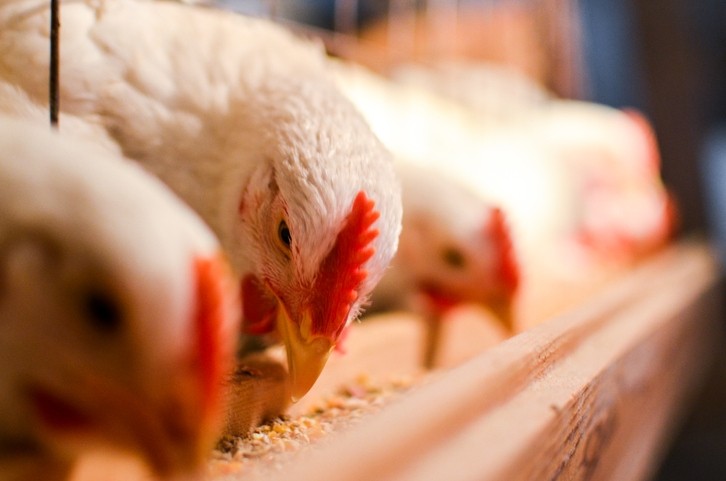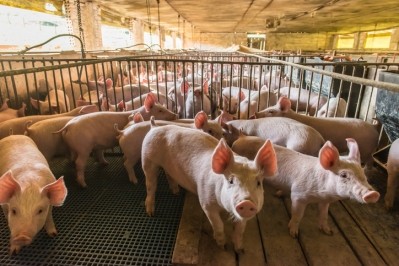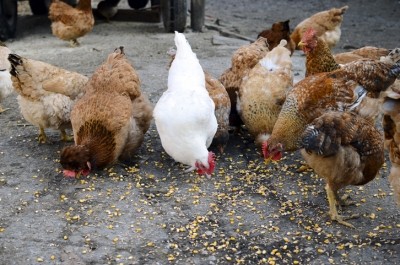Superdosing phytase in maize-based diets may boost nutrient use

Researchers from South Dakota State University and DSM explored chicken’s response to the use of high levels of phytase in their diets.
They published their work in the journal, Animal Feed Science and Technology.
“[The] objective of this study was [to] determine the effects of super dosing maize-based diet for broilers with phytase on ileal digestibility and retention of energy and nutrients, and dietary AMEn value (apparent metabolizable energy corrected for nitrogen value),” the researchers said.
The researchers found that birds getting a positive control diet had higher CAID for gross energy and crude protein, but the coefficient of apparent ileal digestibility (CAID) for starch, calcium (Ca) and phosphorus (P) was similar to those on the non-supplemented control diet.
However, increasing the level of phytase in the NC diet did not alter the CAID or AMEn value, but it boosted the CAID for gross energy, crude protein and P, they added.
“An increase in level of phytase in a low Ca and non-phytate P maize-based diet improved ileal digestibility of gross energy, crude protein and P,” the researchers said. “This indicates that supplementation of phytase at super dose levels (≥2,500 FTU/kg) is more beneficial with regard to improving ileal digestibility of energy, protein, and P in maize for poultry than supplementation of phytase at the industry recommended level.”
Why add phytase to maize diets?
Corn is one of the most commonly used ingredients in poultry feeds in North America and in other parts of the world, the researchers said. But about two-thirds of the phosphorus found in the feed ingredient is bound to phytic acid.
“Phytic acid-bound P is poorly digested by poultry,” they said. “Also, phytic acid can bind to other nutrients including multivalent cations, amino acids, and starch, leading to their reduced availability for digestion and utilization by poultry.”
However, phytic acid can be neutralized by adding phytase to bird diets, they said. The influence of phytase on nutrient digestibility and use has been previously documented.
“Supplementation of diets for poultry with phytase at higher levels (≥2,500 FTU/kg; super dose levels) than industry recommended levels (500 to 1,000 FTU/kg) has been shown to have more positive effects on nutrient digestibility and utilization by poultry fed complete diets,” the researchers said.
However, little is known about the use of high levels of phytase on the nutrient digestion of maize or corn, the researchers said.
“Information on the effect of super dose level of phytase on nutrient digestibility of individual feedstuffs is important for development of nutrient matrix values of the feedstuffs when they are included in diets that are super dosed with phytase.”
Feeding trial details
In the feeding trial, 180 broilers received one of three diets from days 15 to 21 of age, the researchers said.
The diets included a maize-based positive control (PC) diet with adequate levels of calcium (Ca) and phosphorus (P) and a negative control (NC) diet with low Ca and P and 1,000 FTU/kg phytase, and the NC diet with an increased level of phytase at 2,500 FTU/kg.
“The PC diet was formulated to meet or exceed the NRC (1994) recommended Ca and P requirements for broiler chickens,” they said. “The NC diet was [the] same as the PC diet except for Ca and non-phytate P contents, which were reduced by 1.80 and 1.50 g/kg, respectively.”
Prior to starting the feeding trial, birds were on a non-medicated, commercial start diet, they added.
Excreta samples were collected on days 19 and 20 and all birds were collected on day 21, the researchers said. Ileal digesta and feed samples also were gathered for analysis.
The apparent ileal digestibility of dry matter (DM), gross energy (GE), starch, crude protein (CP), Ca and P, along with the apparent retention of DM, GE and CP were determined, they said.
Results
The phytase activity in the PC diet was below the “detectable limit,” and was similar to the activity value in the NC diet – as anticipated, the researchers said. But, the “analyzed phytase activity value” for the supplemented NC diet was higher than expected.
The CAID for Ca, P and starch were similar for the PC diet and the NC diet, although the AMEn in the PC diet was reduced compared to the NC diet, they said.
Adding phytase to the NC diet boosted the CAID of gross energy and crude protein – by 2.5% and 7.1%, respectively, they said. It also tended to increase the CAID of apparent ileal digestible energy and P.
However, the increase in phytase level did not alter the CAID for starch or dietary AMEn value, they said.
“The increase in CAID of GE, CP, and P by phytase supplementation to the NC diet imply that an increase in level of phytase supplementation from the recommended level to superdose level can result in a further increase in nutrient digestibility in maize for broilers,” the researchers said.
“Addition of phytase to the NC diet numerically increased the apparent retention of CP and dietary AMEn value,” they said. However, the coefficient of apparent retention (CAR) of GE was not altered by supplemental phytase, they added.
Overall, adding more phytase to a maize-based diet with low levels of Ca and non-phytate P boosted the ileal digestibility of gross energy, P and crude protein, they said.
Source: Animal Feed Science and Technology
DOI: published online ahead of print: doi.org/10.1016/j.anifeedsci.2019.04.005
Title: Enhancing nutrient utilization in maize for broiler chickens by superdosing phytase
Authors: T. Woyengo, J. Wilson















